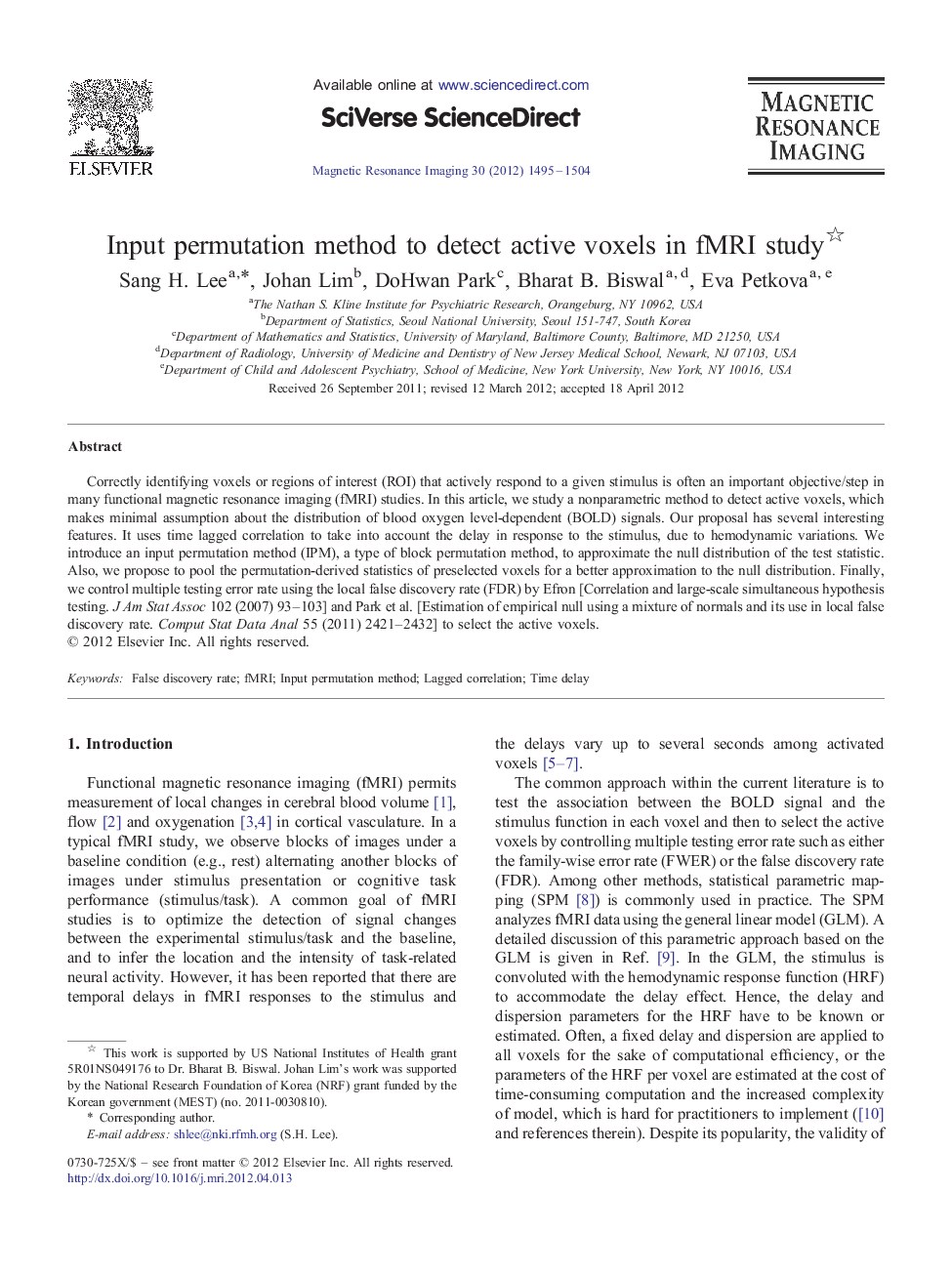| Article ID | Journal | Published Year | Pages | File Type |
|---|---|---|---|---|
| 8160082 | Magnetic Resonance Imaging | 2012 | 10 Pages |
Abstract
Correctly identifying voxels or regions of interest (ROI) that actively respond to a given stimulus is often an important objective/step in many functional magnetic resonance imaging (fMRI) studies. In this article, we study a nonparametric method to detect active voxels, which makes minimal assumption about the distribution of blood oxygen level-dependent (BOLD) signals. Our proposal has several interesting features. It uses time lagged correlation to take into account the delay in response to the stimulus, due to hemodynamic variations. We introduce an input permutation method (IPM), a type of block permutation method, to approximate the null distribution of the test statistic. Also, we propose to pool the permutation-derived statistics of preselected voxels for a better approximation to the null distribution. Finally, we control multiple testing error rate using the local false discovery rate (FDR) by Efron [Correlation and large-scale simultaneous hypothesis testing. J Am Stat Assoc 102 (2007) 93-103] and Park et al. [Estimation of empirical null using a mixture of normals and its use in local false discovery rate. Comput Stat Data Anal 55 (2011) 2421-2432] to select the active voxels.
Keywords
Related Topics
Physical Sciences and Engineering
Physics and Astronomy
Condensed Matter Physics
Authors
Sang H. Lee, Johan Lim, DoHwan Park, Bharat B. Biswal, Eva Petkova,
